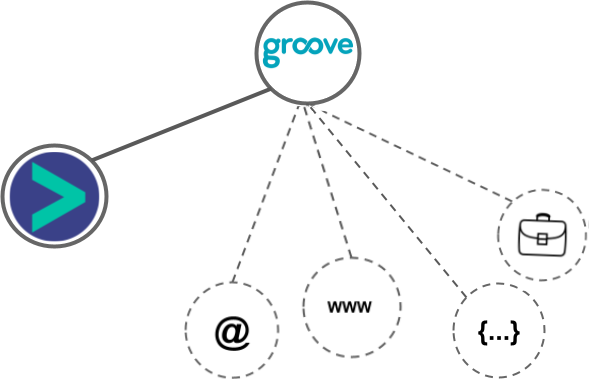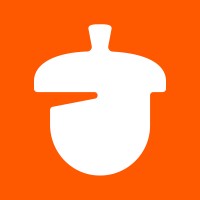Groove vs Intercom
Hyperise integrates with 100's of sales and marketing tools, many of which are in the CRM category. With so many to choose from it's sometimes hard to know which is best, but don't worry, we've got your covered.
In this comparison guide we're going to look at the Highlights, Pros, Cons and Pricing of Groove and Intercom. We'll also delve into the details of which offers the best personalization options within CRM, with there respective Hyperise integrations

Groove
Pricing: Groove offers two pricing plans; the Standard Plan, priced at $15/user/month, and the Enterprise Plan, priced at $25/user/month. Both pricing plans include an unlimited number of help desk contacts, unlimited tickets and conversations, ticket rules, a knowledge base, and community solutions. The Enterprise plan offers additional features such as automated ticket routing, analytics and reporting, and custom branding.
Vs
Intercom
Pricing: Intercom offers customers a range of pricing plans to meet their individual business needs. These plans range from free basic plans to paid plans, which start at a minimum of $50 per month. The most expensive plan is the Enterprise plan, which is $300 per month. The plans are based on the amount of features, users, and contacts you need. For more details, visit Intercom's pricing page.Groove vs Intercom Highlights
Groove is a customer service and support software powered by ticketing systems, knowledge bases, and collaboration tools, while Intercom is a customer communication platform focused on facilitating customer conversations through chat and messaging.
The difference between Groove and Intercom is their core functions. Groove focuses on customer service and ticketing systems, giving companies the tools they need to provide fast and efficient customer support. In contrast, Intercom focuses on customer communication, providing tools to help companies interact with their customers via chat and messaging. Groove empowers companies to provide personalized, fast service, and Intercom allows them to engage customers in meaningful conversations. Overall, Groove and Intercom both provide valuable customer service functions, and the choice of which to use should be based on the companys needs.
Groove vs Intercom Pros
Groove Pros
- Pros of Groove vs. Intercom
- Cost effective: Groove's pricing plans are significantly more reasonable than Intercom's
- Customization: Groove allows for greater customization of customer service interactions than Intercom
- Workflows: Groove offers more complex and powerful workflows than Intercom
- Automation: Groove offers more automation capabilities than Intercom
- Integration: Groove supports a wide range of integrations than Intercom
- Multi-channel support: Groove provides support both in-app and via email, while Intercom only supports in-app conversations
- Ease of use: Groove is more user-friendly than Intercom, making it easy to setup and use
Intercom Pros
- Ability to send personalized messages: Intercoms automated messages allow users to tailor content to their customers in a much more meaningful way than Groove does.
- Integrates with your CRM and other apps: Intercom can easily be integrated with a variety of different platforms and apps, allowing you to get real-time data on customers and make decisions based on this information. Groove does not allow this level of integration.
- Group conversations: Intercom allows you to create group conversations, allowing multiple team members to collaborate and respond to customers at the same time. Groove doesnt have this feature.
- Automation: Intercom has an automation feature which allows you to create automated messages to your customers, saving you time when dealing with customer inquiries. Groove does not have this feature.
- Analytics and reporting: Intercom allows you to easily track and analyze customer interactions. Groove does not offer this feature.
- Cost: Intercom is more cost-effective compared to Groove for businesses.
Groove vs Intercom Cons
Groove Cons
- Groove does not offer powerful in-app messaging features to make interacting with customers easier
- Groove's analytics solution is limited and doesn't have the same data that Intercom can provide
- Groove does not offer a basic segmentation capability or ability to target customers
- Groove does not have an easily customizable help-center feature
- Intercom has a wider range of integrations and support for third-party tools
Intercom Cons
- Intercom is much more expensive than Groove
- Intercom doesn't offer the same level of customer usage analytics as Groove
- Intercom's customer segmentation and targeting capabilities are more limited than Groove's offering
- Intercom's customer support ticketing capabilities are not as comprehensive as Groove's offering
- Intercom's chat automation is limited compared to Groove's feature-rich offering
- Intercom's reports are not as extensive as Groove's offering
- Intercom's customer service feature set is less robust than Groove's offering
Groove & Intercom Hyperise Integrations
Groove uses the HTML code embed method to integrate with Hyperise, giving a simple way to add personalized images to your messages.
Groove makes the following data points available to Hyperise, to enable personalization in images used in outreach and linked out to your personalized website landing pages.

- Using business Email passed from Groove, Hyperise is able to enrich business logo and website screenshots. In some cases, with a business Email we're also able to enrich profile images, subject to the business email having a publicly available profile.
- Using business Website passed from Groove, Hyperise is able to enrich business logo and website screenshots.
- Business name
- Category
Groove Integration Guide
Intercom uses the HTML code embed method to integrate with Hyperise, giving a simple way to add personalized images to your messages.
Intercom makes the following data points available to Hyperise, to enable personalization in images used in outreach and linked out to your personalized website landing pages.
- Using business Email passed from Intercom, Hyperise is able to enrich business logo and website screenshots. In some cases, with a business Email we're also able to enrich profile images, subject to the business email having a publicly available profile.
- Business name
- Using business Website passed from Intercom, Hyperise is able to enrich business logo and website screenshots.
Intercom Integration Guide
 vs
vs 
 vs
vs 

 vs
vs  vs
vs  vs
vs  vs
vs  vs
vs  vs
vs  vs
vs 











